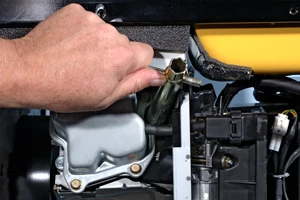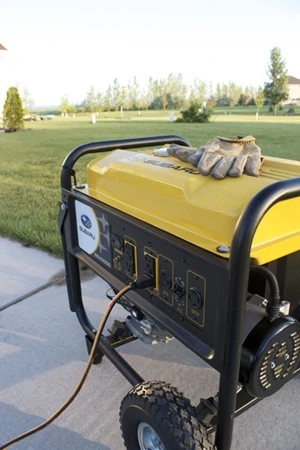By Dale Gabrielse
Training Manager, Subaru Industrial Power Products
For many, summer is the time to relax and take it easy – not the case for do-it-yourselfers. Summer is prime time to take care of all sorts of projects, whether it be building a new deck, installing a fence, or one of the dozens of other DIY projects on the list. Because tools and equipment are often pushed to their limits during these busy months, routine maintenance often falls by the wayside.
But as the projects start wrapping up and summer comes to an end, the fall presents an ideal time to give equipment some much-needed TLC. While a generator doesn’t require time-intensive maintenance, it does need regular attention year-round and a little extra care to prepare for seasonal changes.
Before The Storm
The number one rule of portable generator operation is never operate indoors or even a partially enclosed space, as doing so can lead to deadly carbon monoxide poisoning. When the temperature drops, it may be tempting to move the generator to a warmer area such as a shed, garage or partially finished building, but it should only be operated outside in a completely open area. A generator is designed to run outdoors and built tough to handle the elements.
Checking the oil before each use is common preventative maintenance. When colder temperatures are on the horizon, the oil must be changed to the appropriate viscosity. Many manufacturers recommend using multi-viscosity oil, which is designed to recognize the outdoor temperature and adjust viscosity accordingly.
Another pre-operation practice is checking the fuel level. Especially during cold weather operation, condensation can occur inside the fuel tank and cause engine problems, so top off the tank before daily operation.
If the air filter hasn’t been cleaned or changed all summer, check to see if it’s dirty or clogged, and clean or change as necessary. Filters should be cleaned about every 100 hours or so and changed on a monthly basis.
Finally, conduct a seasonal inspection of the spark plugs to be sure they’re clean and damage-free. A wire brush or spark plug cleaner may be used to remove any excess dirt or carbon. Be sure to replace any damaged or cracked plugs immediately.
Even with adequate pre-season preparation, normal generator operation can be interrupted due to sudden weather conditions. Knowing how to react and troubleshoot problems will prevent excessive downtime.

Cool Running
Although generators actually run very well in cooler weather, the damp conditions that often come with rain and early snowfall can cause problems for the carburetor, crankcase and breather system. If cold or freezing rain, or even snow begins to fall, place a protective awning or tarp a few feet above the unit. This will protect it from snow and ice intrusion, while still allowing adequate ventilation.
If the generator’s operation slows or stops completely, or it begins to smoke, it’s likely moisture has built up and created icing around the carburetor. If this happens, shut down the generator and move to a warm, dry place until the ice has melted. Be sure to wipe off any excess moisture.
To prevent issues of ice build-up around the carburetor, some generator manufacturers offer cold weather kits. These kits include a special feature that directs warm air from the cylinder head back to the carburetor.
A quick seasonal tune-up can be the difference between worry-free generator operation and a lot of frustration in the coming months. Taking the time to perform a little preventative maintenance and prepare the unit for the upcoming season will greatly pay off in the long run.
###




